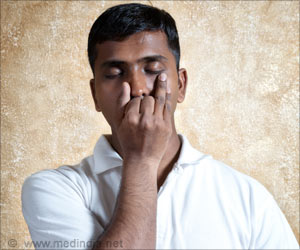To address this issue, the current study conducting a network meta-analysis, which enables a simultaneous comparison of results from multiple treatments in a single analysis, to compare the effects of multiple types of exercise training on lung function in adults with asthma.
The analysis included a total of 28 RCTs involving 2,155 people with asthma and examined the effects of breathing training, aerobic training, relaxation training, yoga training, and breathing combined with aerobic training, on lung function.
Advertisement
All five types of exercise interventions demonstrated greater effectiveness in improving lung function measurements compared to the conventional rehabilitation control group.
The study found that breathing training, aerobic training, relaxation training, yoga training, and breathing combined with aerobic training, led to improvements in the levels of Forced Expiratory Volume in the first second (FEV1) levels and Peak Expiratory Flow (PEF) ().
Aerobic training, breathing training, yoga training, and breathing combined with aerobic training, improved the level of Forced Vital Capacity (FVC). Breathing training, aerobic training, and yoga training improved the FEV1/FVC ratio.
Furthermore, the researchers applied a statistical technique to rank the effects of different exercise treatments against each other. Relaxation training showed the most significant effect on improving FEV1 levels, breathing combined with aerobic exercise had the most significant effect on improving FVC levels, and yoga training had the most significant effect on improving PEF levels.
These findings should provide valuable insight for healthcare professionals prescribing exercise training for the management of adult asthma patients. However, it is essential to consider individual factors, such as family history, duration of the condition, and environmental influences, when designing exercise rehabilitation programs.
Tailoring interventions to individual physical and mental health conditions, with careful consideration of exercise intensity, frequency, and duration, is important for optimizing treatment outcomes().
Researchers acknowledge certain limitations that could impact the broader extrapolation of these results – including inherent variability between the included studies and inconsistencies in exercise intensity and frequency details. Importantly, they highlight that many patients in the study were under 60 years of age, so exercise interventions may yield different responses in older individuals.
References:
- Kuder, Margaret M et al. A Systematic Review of the Effect of Physical Activity on Asthma Outcomes. The journal of allergy and clinical immunology. 2021.(https://www.jaci-inpractice.org/article/S2213-2198(21)00510-9/fulltext)
- Shuangtao Xing, Shijie Feng, Dan Zeng. Effect of exercise intervention on lung function in asthmatic adults: a network meta-analysis. Annals of Medicine. 2023.(https://www.tandfonline.com/doi/full/10.1080/07853890.2023.2237031)
- Lang, Jason E. The impact of exercise on asthma. Current Opinion in Allergy and clinical immunology vol. 19,2 (2019): 118-125.(https://journals.lww.com/co-allergy/abstract/2019/04000/the_impact_of_exercise_on_asthma.8.aspx)
Source: Newswise



